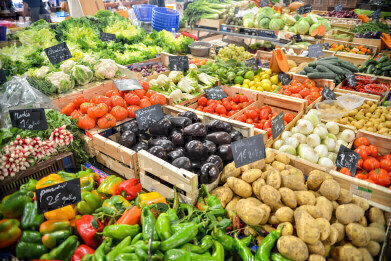Environmental Laboratory
Can We Generate Electricity from Food Waste?
May 23 2016
At present, the world is facing a mounting energy crisis, with a battle being waged on two fronts. On the one hand, we are over-reliant on fossil fuels, a dwindling supply which is expected to run out some time in the next few decades. On the other, these very same fuel sources emit copious amounts of harmful chemicals such as carbon dioxide (CO2), methane and other contaminants, adversely affecting air quality and contributing to global warming.
Meanwhile, we also have a huge waste problem. In the United States alone, it was estimated that 59 million tonnes of food were wasted in 2015, which is roughly equivalent to one third of all of the produce America grows and imports. An innovative company from Colorado is hoping to kill all three birds with one stone by producing clean energy through the reuse of waste foodstuffs.
The History of Biogas
The idea of determining the value of waste materials as fuel feedstock is not a new one. Along with food waste, wood, sewage, textiles, cardboard, paper and other residue traditionally only considered fit for the scrap heap have recently been converted into fuel sources, with varying degrees of success.
In particular, biogas has enjoyed a period of prosperity in Europe. From its early developmental days in Germany, the use of food and other forms of waste as biogas to create electricity has become more and more popular across the continent. Anaerobic digestion is the main method of converting such waste into useful electricity, primarily in power plants, industrial factories and wastewater treatment centres.
Anaerobic digestion works by capitalising upon the natural decomposition of food and other waste materials. As they rot away (normally in landfills), they release methane – which can be a harmful contaminant if allowed to disperse freely into the atmosphere. However, anaerobic digestion harnesses the power of this pollutant and converts it into something we all need: electricity.
Heartland at the Heart of the US Movement
As aforementioned, biogas has been a popular venture in Europe for many years, but the idea is only just beginning to take off in the States. One of the earliest proponents of its use are the Heartland Biogas Project in Colorado, owned by the Environmental Defence Fund (EDF)’s Renewable Energy Wing.
“We’ve seen a lot of those types of digesters in Europe and we’re just starting to see them emerge in the US,” remarked Darby Hoover, a specialist on the Natural Resources Defence Council (NRDC), before pointing out that the overheads of such a project might put off some cities. “With an anaerobic digester you often have a high project cost up-front. Cities may not see that there’s a high value to implementing something like a digester.”
However, the Californian capital of Sacramento has not fallen foul of such a pitfall. The city has committed to a 20-year relationship with Heartland, during which time it plans to buy 100% of the electricity generated there in order to meet its ambitious renewable energy targets. As is often the case, the west coast state appears to be leading the way in American innovative thinking; it remains to be seen whether the other 49 states will follow suit.
Digital Edition
IET 34.2 March 2024
April 2024
Gas Detection - Biogas batch fermentation system for laboratory use with automatic gas analysis in real time Water/Wastewater - Upcycling sensors for sustainable nature management - Prist...
View all digital editions
Events
Apr 30 2024 Melbourne, Australia
Apr 30 2024 Birmingham, UK
May 03 2024 Seoul, South Korea
May 05 2024 Seville, Spain
May 06 2024 Minneapolis, MN, USA


















